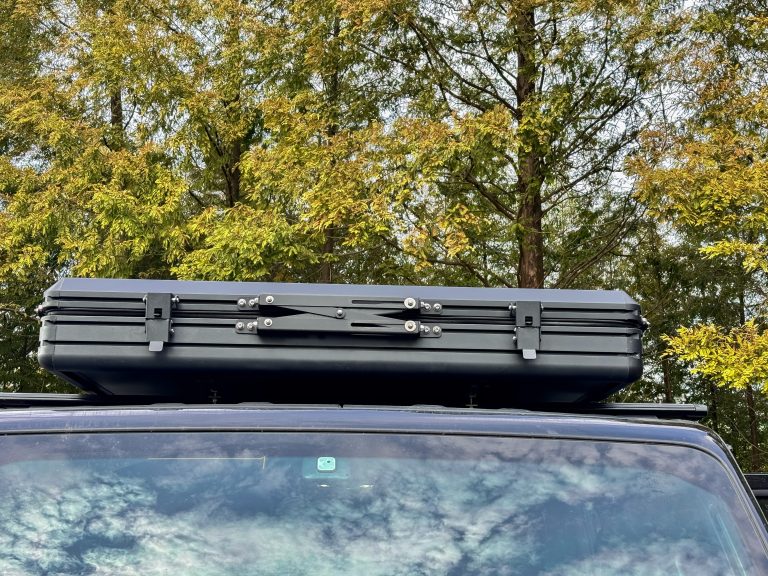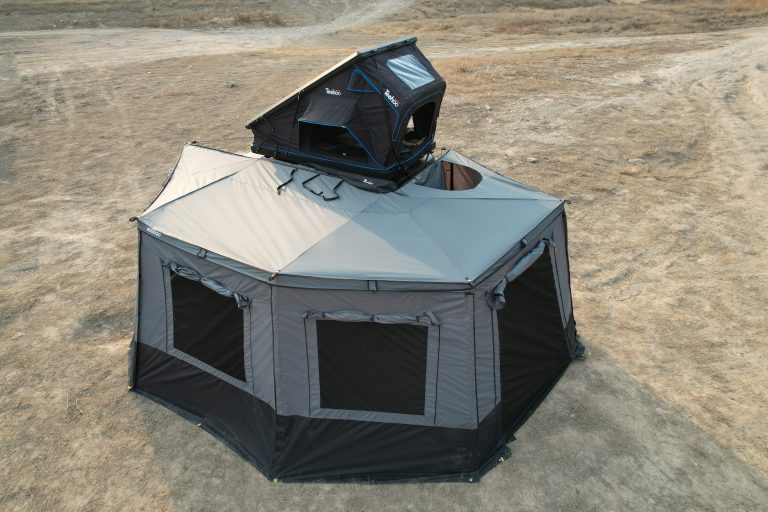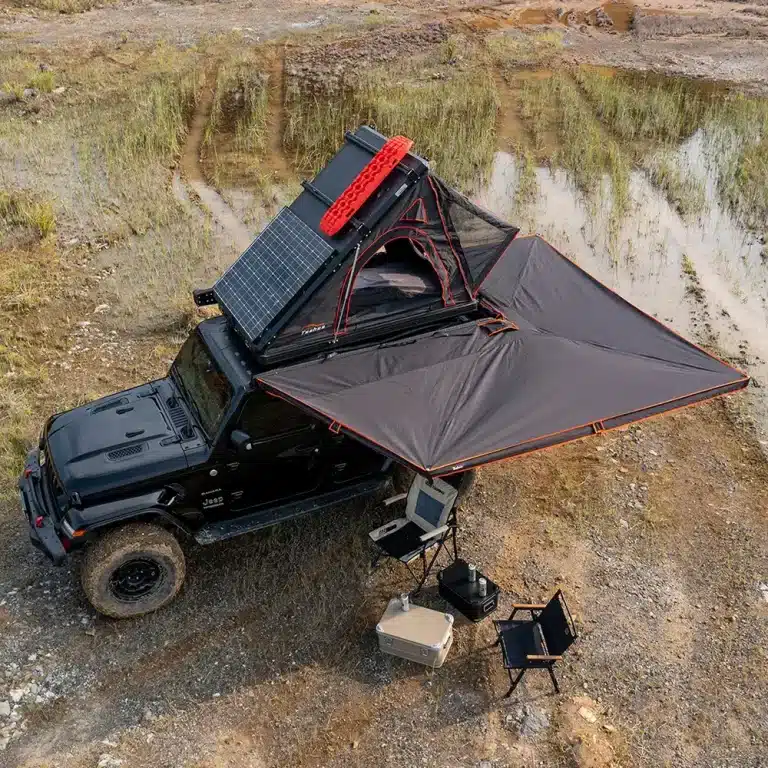
What A Chinese Rooftop Tent Manufacturer–Teehoo Did to Solve Problems of Rooftop Tents
Rooftop tents have been the trend in Overlanding worldwide. You can see many videos and photos on social media platforms like Instagram and YouTube. Some articles and guidelines tell you how to choose a rooftop tent. Many KOLs and KOCs analyze the pros and cons of rooftop tents; however, the rooftop tent now still has some problems that manufacturers have difficulties solving, given material and craftsmanship costs.
In this article, the author listed the most seen issues of RTTs in the market, recommended Teehoo, a rooftop tent manufacturer, and explained why we chose it.

The Most Seen Problems in The Market
Waterproof
Besides structure security, waterproofing is one of the most significant features. If waterproof performance is not good, there will be many problems, like water leaks, high humidity, and frosty air, eventually leading to mold and even destruction.
This could happen on the hardshell base or the softshell fabric; thus, the breathability of the tent fabric and structure plays a vital role in the Overlanding experience.
Many factors could lead to water leaks, such as fabric PU coating performance, limited appearance design, and fabric sewing process. If the junction among aluminum frames does not work very well, water leaks will also occur.

Gas Mileage
Improving gas mileage in SUVs helps reduce fuel consumption, saving money on gas and reducing environmental impact by reducing greenhouse gas emissions; however, after installing a rooftop tent, especially the hardshell rooftop tents that can be up to 80-100kg in weight, the gas mileage will take a hit and what following is higher fuel consumption and emissions, which means that you need to spend more money on gas; therefore, to be lightweight and low profile can be a competitive feature and even to be top one for rooftop tents.
Complicated Installation
Due to its heavy weight and large size, the rooftop tent, especially the large size and hardshell one, can not be installed on the car just by one person. And it is a little complicated to operate for those trying rooftop tents for the first time.
Condensation
Condensation occurs when moist, hot air (water vapor) meets a cold surface, turning it into liquid, often in winter or cold days. It is because of the high humidity inside the tent, and the possibility of mold increases. Generally, high humidity means less comfort for people who sleep there; therefore, breathability for bases and fabric plays a vital role in the Overlanding experience.
Product Consistency
Given the small market of rooftop tents, there are no strict quality control systems for many rooftop tent manufacturers, leading to the variation in product quality. Buying one unqualified tent, which might not include all accessories, or getting water leaks and color fading is commonplace.
What Teehoo Did
Quality Materials
What materials are used in rooftop tents decides how tough they are, how long they can be used, and how you feel when sleeping in the tent. We procured infinitely variable LED lights, durable fabric, and honeycomb bases in hardshell rooftop tents, softshell rooftop tents, 270-degree wing awnings, 180-degree wing awnings, and other Overlanding accessories.
Quality Control System
Quality control (QC) is a process through which a business seeks to maintain or improve product quality.
We build a system to create product and material quality standards, train personnel to improve technique, and test products to check for statistically significant variations.
What’s more, we have engineers to inspect incoming quality control (IQC), process quality control (PQC), and outcoming quality control (OQC).
We will build a laboratory to test raw materials and finished products regarding fabric thickness, color fastness to light, etc. We also have testing machines, like a salt spray tester, to get an accurate result of the quality of materials and product performance.
Training and testing for labor are held regularly to improve their skills and techniques. Moreover, we set high incoming material inspection standards, sewing techniques standards, and standard operating procedures (SOP).

R&D (Research and Development)
Lightweight and low profile are the principles that our R&D team follows. The latest products, ultra-thin softshell rooftop tents, 270-degree wing awnings, and 180-degree wing awnings, are lower and much lighter than previous ones when closed. The wing awnings only weigh 18kg in net weight, and the cross-sectional area is 15 cmX15 cm. In this way, the drag force will be reduced, and then the gas mileage will reach an average level, economically and environmentally.
For soft-shell rooftop tents, we canceled the extra bottom rail and designed it on the base, so the tent profile became 16cm, much lower than before. Besides that, our tent bases are made of aluminum honeycomb, and we designed more air holes on the base so that the air can flow between the tent inside and outside to fix condensation.
Conclusion
It is known that rooftop tent manufacturers are concentrated in China. Teehoo, as a customized Chinese rooftop tent supplier, focuses on producing durable and cutting-edge design rooftop tents with high-quality materials, a professional team, and systematic standards and procedures. If you are bullish on rooftop tent market, why not start a business with Teehoo? If you are looking for a new China rooftop tent supplier, please get in touch with us to discuss rooftop tent manufacturing. We are open to communicating with all interested in rooftop tents.



